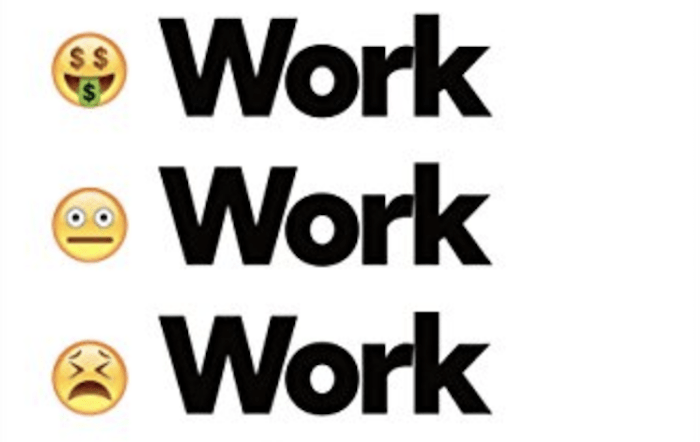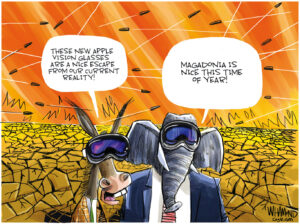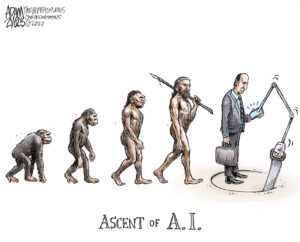Snooping Through Silicon Valley
This exploration of the tech industry "strings lights around the absurdities of the gig economy and the belief in Everyman entrepreneurial capacity." Macmillan
Macmillan

Purchase in the Truthdig Bazaar
“Live Work Work Work Die: A Journey Into the Savage Heart of Silicon Valley”
A book by Corey Pein
In the introduction of the timely and amusingly titled “Live Work Work Work Die,” author Corey Pein notes that his book is “not straightforward journalism, but truthful.” Pein’s “Journey Into the Savage Heart of Silicon Valley” (the subtitle) conveys empathy for and savviness about his sources, and his self-deprecating tone buoys his claim of honesty. However, he obtained much of his information without telling his interviewees that they were being interviewed for his book, and he assumed everything said to him was on the record. These are unsettling facts to consider when assessing the results of his snoop through the tech sector, which he shows to be more worrying than wonderful.
Pein is a wry and sharp chronicler with a gift for phrasing that strings lights around the absurdities of the gig economy and the belief in Everyman entrepreneurial capacity. But the main title’s promise—or at least, its implication—doesn’t deliver, despite the accompanying, trending emoji graphics. (Though these emojis could illustrate Elon Musk’s trajectory of tech aggression.) There’s no soul stripping, existential reckoning about what lies beneath and beyond so many gauntlets to venture capitalist altars. Rather, the depressing, similar tales of wealth-seeking youth (and their failures to achieve it) in the book’s first two-thirds suddenly give way to a focus on a broader story—the shadowy beginnings and dark underpinnings of powerful tech companies and some of their key people.
It seems counterintuitive as a book structure, but personal journeys attract multigenerational eyes and ears these days, so his being a centerpiece of the narrative may have been Pein’s selling strategy. The reader trails along with him from one free drink dispensary and shared housing disappointment to another, where temporary tenants, pumped on passion for tech success, rarely stop working. Almost everyone we meet has an idea, and seeks investors or well-paid, plentifully perked employment. Arrogance and incompetence seep from the pages, as from the higher math whiz baffled by a simple rice cooker, even though he mostly subsisted on rice. Pein quotes an unnamed Twitterer: “Tech culture is focused on solving one problem: What is my mother no longer doing for me?” Genius does what it must. …
Click here to read long excerpts from “Live Work Work Work Die” at Google Books.
Before getting to that last section on tech’s dungeons and dragons, Pein details his own paces through the pitching-for-dollars process and experience, enlightening readers about subjection to high-roller humiliation. Despite learning, bizarrely, that one doesn’t actually need a Big Idea to find an investor, he develops a doozy called Laborize. His satirical startup would help its customer companies by organizing restive workers of rival companies:
“If Uber could use stealthy labor-organizing-style tactics in its campaign to poach drivers from Lyft, why shouldn’t Lyft retaliate by covertly funding an actual employee union drive at Uber? Come to think of it, why shouldn’t any company that wanted to gain an edge over a competitor do this?”
Illegal and highly unlikely, he takes the idea for several spins around the pitch pit, gets a few laughs, a serious warning, zero dollars, and then joins the other mostly male starters, those who never get far enough to be counted, as part of the 95 percent who fail.
After his fast failure, Pein rents his last and least dismal digs, a backyard tent, and begins ripping back curtains on some of the wizards of Silicon Oz. The quackery is as surreal as the money, and the fact that these stories are not as famous as the many legends about Steve Jobs says much about the levels of risk, reason and sanity in this branch of unbridled capitalism.
Though repellent, I found the stories of structural corruption more forceful than those of individual valley disciples anxious to make their first cool billion. Of course, many go to Silicon Valley for the billions, and the stories are braided. But the broader picture is more pertinent as a warning about tech’s sinister, pernicious capabilities. As recent headline stories have indicated, much of the wrongdoing by its leadership was done knowingly for growth, “sincere” regrets notwithstanding.
Pein lays foretelling groundwork about the missing morals of some of Big Tech winners, starting with little-touted details of Stanford’s ignoble beginnings. Namesake Leland Stanford’s history includes abusing immigrant railway workers. Founding president David Starr Jordan promoted white supremacy in a eugenics pamphlet he authored, and is quoted as having said to the class of 1907, “An aristocracy of brains is the final purpose of democracy.” (There are more Stanford men who favored the non-science of eugenics, which influenced the German Nazi Party.) Pein draws a long line from Stanford’s ugly past to internet platforms featuring today’s burgeoning hate groups.
There are tidbits about early lawbreaking escapades—and the passes they were given—of Google, Apple, Facebook and others. (Pein interviewed no major company founders or CEOs.) For anyone who watches the HBO show “Silicon Valley,” the revelations will not be surprising. If tech titans are updated iterations of personified greed resting on the old idea that one is extraordinary if extraordinarily rich, so what? It’s not as if we all haven’t been warned about money lust before, in many cautionary tales.
What’s different is that our latter-day tech savants also sell themselves as change agent visionaries dusted with heroic magic. Magic properties have long been used in marketing consumer goods, but in the tech world, the seer/founders are marketed, too. Changing the world was their vague promise that became the Kool-Aid cliche, and many enthusiasts swallowed it. (“Change” often sells in politics, too; never mind that it is a term implying no value.) Worse, few “visionaries” were smart enough or wise enough to imagine the potential for diabolical social shifts that were lurking in their designs.
The further I got into the book, the more similarities I found between the web and the Bible, in terms of power—both spread globally, both have been mightily misused to sway and soothe minds, and each arena’s originators couldn’t imagine the destructive potential that might come of obsessive, zealous devotion. That the viral spread of neofascist/neo-reactionary and white supremacist alt-rightism could link to the rise of authoritarian regimes did not occur to some of the most famous top-tier brainiacs, or that exponential damage would parallel customer growth.
Worship of dubious ideas proves as keen as worship of money and wealthy gods. The part of the book covering the Foresight Institute, The Singularity and those connected to it—Ray Kurzweil, Peter Thiel and others—is especially disturbing. Thiel is one of those Valley gods with a flat demeanor and dismissive disdain for diversity, government and nonprofit organizations, contending that the absence of profit as a goal indicates an unwillingness to work hard. (Huh?) Palantir, one of Thiel’s latest endeavors, is a powerful, opaque surveillance data management company whose funds came partially from the CIA’s venture capital front In-Q-Tel. Too bad government is so useless. The inconsistencies and hypocrisies in Thiel’s beliefs and proclamations over the years are striking, but his alliance with the current president makes perfect, if tragic, sense.
A last note about the book: The publisher’s marketing material sells the author as an undercover operative who assumed an entrepreneur identity in order to learn what it’s like in the tech trenches. But it is clear from the beginning of the book that Corey Pein began the project in search of success and wealth for himself. He had tried twice before without hitting it big, but never in Silicon Valley, the biggest tech casino of all. Once there, he awakened to its ruses quickly, and delivers a vital portrait of the culture as well as a significant, if partial, history. So, why the misleading PR? Does it matter? Isn’t all PR misleading? As with Pein’s slippery approach to journalism, answers to these questions are of a piece with his warnings about Big Tech’s seductive invasions and effects.
Your support matters…Independent journalism is under threat and overshadowed by heavily funded mainstream media.
You can help level the playing field. Become a member.
Your tax-deductible contribution keeps us digging beneath the headlines to give you thought-provoking, investigative reporting and analysis that unearths what's really happening- without compromise.
Give today to support our courageous, independent journalists.






You need to be a supporter to comment.
There are currently no responses to this article.
Be the first to respond.